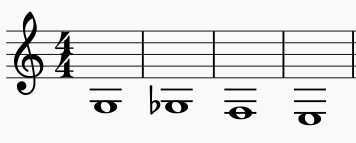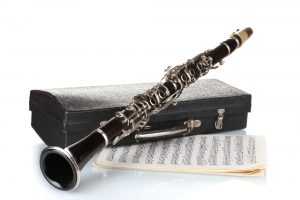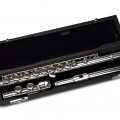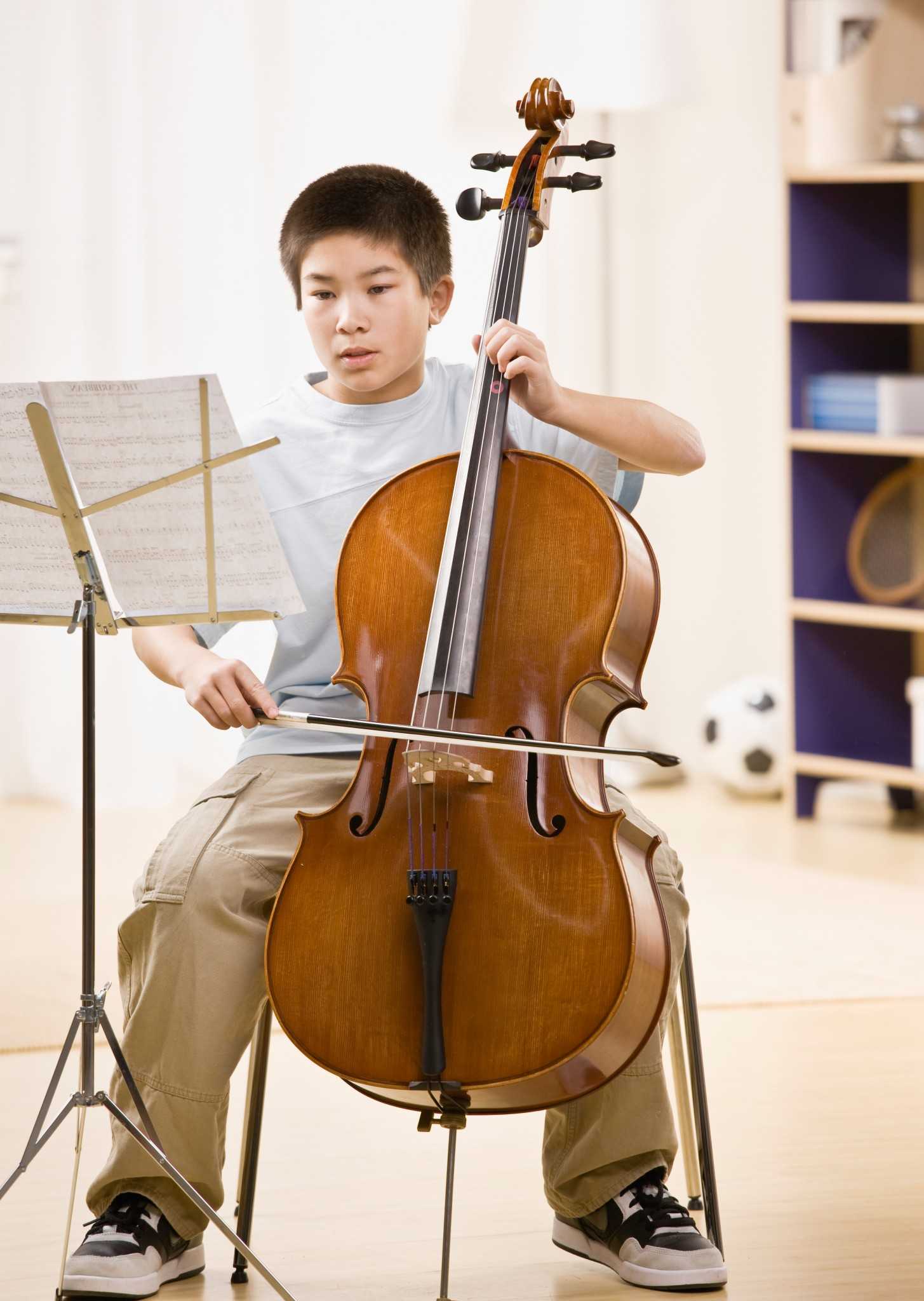Before getting into our clarinet warm ups, let’s ponder a few hypothetical scenarios:
1) You’ve been assigned a group presentation in one of your classes. You’ve been pretty busy with other classes so you haven’t really had time to work on this particular assignment. Luckily, your classmates picked up some of the slack and wrote your part of the presentation out for you. To make matters worse, on the day of the presentation, you wake up late and need to rush to get to school on time. You barely make it to your first period class. When it comes time for the presentation, you’re tired and you’re reading off of note cards that you haven’t had the chance to look over. You’re dealing with early morning throat and sinus congestion, all while stuttering all over the place.
2) You know that today is pull-up day in gym class. You’re not the most athletic person, but you’ve always excelled at pull-ups. It’s your time to shine; your time to impress everyone. You know you can do twelve pull-ups with perfect form. You’re running late, so you miss the warm-up stretches. When it comes time to do the pull-ups, you can barely do seven. Your arms are incredibly sore for a few days afterwards.
 3) It’s time for school band auditions. You were fourth chair in wind ensemble last year, but you’re pretty sure you can make first or second chair this year. You just got back from summer vacation during which you didn’t practice as much as you usually do during the school year. When it comes time for the audition, you squeak a couple of times and mess up some passages that you shouldn’t have; you totally bomb it.
3) It’s time for school band auditions. You were fourth chair in wind ensemble last year, but you’re pretty sure you can make first or second chair this year. You just got back from summer vacation during which you didn’t practice as much as you usually do during the school year. When it comes time for the audition, you squeak a couple of times and mess up some passages that you shouldn’t have; you totally bomb it.
Each one of these situations could have been avoided if you took the time to warm up. Even as little as ten minutes of speaking, or looking over your notes, or stretching, or playing through some scales would have made you astronomically more successful.
“warm ups” are simple exercises that one performs in order to prepare oneself for more complex activities. Professional athletes, actors, news anchors, musicians, and other performance artists all warm up. warm ups reduce the chance of stress and injury, increase articulation, align your mind and body connection, help you to achieve peak performance, and, simply, make you feel as comfortable as possible.
Warm-up routines are personal to each individual and are specific to each situation. You want to vary your warm up routine, on both a short-term and a long-term basis. You want to avoid monotony and make sure that you’re challenging yourself in new ways. Start with what you know, but always move on to what is difficult. Some parts of your warm-up routine, however, will remain unchanged. You may choose different scales or technical exercises each time you warm up, but long tones will always be a part of your routine.
The length of time it takes to sufficiently warm up depends on a few different factors. One part of warming up is literally warming up your instrument. Your instrument will take less time to warm up if it’s been sitting in your room than if it’s been sitting in the trunk of your car during the wintertime (I would not advise doing this). Your warm-up routine also depends on the situation that you are warming up for. There are general warm ups and there are specific warm ups. General warm ups consist of exercises that you perform in order to get ready for a long practice session or an ensemble performance. These are exercises you should do on a daily basis. Specific warm ups are specific to a given situation. Specific warm ups can include getting ready for an audition or a high pressure performance (solo, duo, concerto). These may consist of running specific difficult passages or other material pertinent to that specific situation.
Clarinet warm ups
It would be impossible to go over all of the possibilities for clarinet warm ups. For the purpose of this article, I will go over a few of the general ways that you can warm up, as a sort of template for you to plan your own warm-up routine.
There are some warm-up staples; there are certain clarinet warm ups that every clarinet player performs regardless of his or her skill level. Long tones help warm up the instrument as well as strengthen your embouchure. Technical exercises help achieve fluidity, comfort, and control.
Long Tones
Long tones are an essential part of warming up on the clarinet. They should be firmly implemented into your daily clarinet warm ups. Long tones have a couple of very important benefits. Most obviously, they will literally warm up your clarinet. A cold clarinet’s intonation will be poor and inconsistent. With consistent, daily practice, long tones will also help to strengthen your embouchure and your air support.
I recommend that you start your long tones in the middle register of the clarinet. The notes in the middle register are the easiest to play. Since they are not so physically demanding, you can focus your mental effort on other aspects of your playing. In order to benefit the most from long tones, you should pay close attention to everything you’re doing. I’ve had many teachers equate practicing long tones with meditation. Remember, warming up is as much about the physical as it is about the mental. If you’re not paying attention, if you’re just “phoning it in”, your clarinet will get warm, but you won’t be taking advantage of the maximum benefit that long tones have to offer.
You should be listening for steady intonation and for a steady tone. The intonation should be solid and the tone should not waver. If this is difficult or impossible for you to do, it’s okay. But, over time it will improve. Steady intonation and a steady tone are the ultimate goals of long tones. When practicing long tones, try to remember to use a metronome and a tuner as often as possible.

After you feel as though you’ve thoroughly and satisfactorily gone through your long tones in the middle register of the clarinet, you should practice long tones in the extremities of the clarinet range. Playing in the middle register, playing in the low register, and playing in the high register all feel different; each register has its own quirks. Warming up every register of the clarinet and reacquainting yourself with what each feels like will help you to avoid squeaking during your practice session or performance. You should practice long tones using all dynamic levels. You want to start by playing quietly. This helps to break in the reed. Once you’ve done that, try to start off playing each note as softly as you can, then crescendo to as loud as you can, and then fade back out to as quietly as possible.


Another great exercise specifically for the clarinet is doing register slurs. Register slurs will help you feel how your throat position needs to shift between the low and high registers. You want to start off on a low to middle register note. Begin quietly and then crescendo. When you’re about to reach your peak dynamic level, add the register key. Register slurs will help you gauge throat position. You also want to listen very closely to your intonation.

Technical Exercises
If long tones are the metaphorical stretching of clarinet warm ups, then technical exercises are the calisthenics. In the second scenario from the introduction, if you would have made it to gym class on time and done your stretching, you would have warmed up your muscles, your blood would have been flowing, and you most likely would have been able to do more pull-ups and would not have been as sore for as long, if at all. The point of warming up on the clarinet is to ease into playing so that you avoid stress, strain, and potential injury. You want to keep the theme of ‘simple to complex’ in your mind throughout the entirety of your clarinet warm ups. You start your warm ups with long tones, then move on to technical exercises. When practicing your technical exercises, you want to start off slow and simple, and gradually move on to faster and more difficult material. This will help to ensure accuracy and ultimate success.
A few examples of technical exercises that you can perform in your clarinet warm ups include running through your scales, running through your arpeggios, playing chromatic exercises, working on challenging areas of the clarinet, working on tonguing and articulation, etc. I’ve written out a few basic exercises that can serve as potential clarinet warm ups. Remember, these are examples; a general template to help you plan your own routine. Your warm-up routine should cater to your specific needs. You can ask your teacher to help you plan a warm up routine for you specifically.


Warming up with scales and arpeggios throughout the full range of the clarinet helps to warm-up your finger technique, but you should also keep in mind the same principles from your long tone exercises. You want a constant, consistent, and steady stream of air, and you want to pay attention to your air flow and speed, throat position, and intonation. You can do major scales and arpeggios. You can also do whatever scales and arpeggios that you’re working on or that will be good for the situation that you are warming up for: minor, diminished, augmented, etc.

As mentioned above, in addition to diatonic exercises, you can also warm up with chromatic exercises. These exercises will ensure that every note is working properly, that there are no pads sticking, etc. You should play through your entire range, up and down, and you should listen for accuracy, consistency of tone, and consistency of intonation.

You can target specific spots of the clarinet that you have some difficulty with. A lot of young and/or inexperienced students have trouble playing “over the break”. The above exercise can help with this. You should start by playing the exercise very slowly. Make sure there is absolutely no space in sound between each note before you begin to speed the exercise up. You should construct other exercises based on areas of the clarinet that are difficult for you.


In addition to warming up your fingers, it’s also a good idea to warm up your tongue. These exercises can be used to warm up your tonguing technique.
Conclusion
Warming up is an essential part of any performance art. It is as much about physically warming up as it is about preparing yourself mentally. It’s about getting focused. Warming up is as much about the singer performing vocal exercises as it is about the singer not wanting to talk to or see anyone in the half-hour before his or her performance.

To the novice, warming up may seem like a waste of time. At first, it seems boring, repetitive, and uninspiring. It seems unnecessary. You might feel the urge to skip over your warm-up routine in order to get to the more fun stuff that you actually want to practice. It’s okay to do this every once in a while, but it’s important to remember that warming up is in your best interest. Not warming up can simply make you have a less-than-stellar performance, or it could leave you with a hand or jaw injury that will prevent you from playing for a couple of weeks. Clarinet warm ups may seem like a waste of time, but in actuality, they end up saving time.
Every musician should always warm up before long practice sessions and before any and all performances. Clarinet warm ups are an essential part of playing the clarinet.








Thankyou, that was very helpful. I also recommend doing a weird jumpy exercise as a warm up. F E F D F C ect… and back up again. I find it helps get my fingers moving!